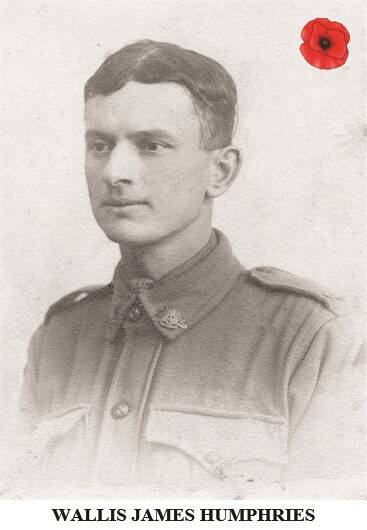
The Grand Offensive to drive the Germans back to their borders and into their homeland began with attacks involving members of the Australian Expeditionary Force and the French on September 26, 1918.
Subscribe now for unlimited access.
$0/
(min cost $0)
or signup to continue reading
The offensive involved attacking over difficult terrain but to counteract this was the news that all of Australia had been waiting to hear – the Hindenburg Line, which had not been breached before, was up for grabs.
This was not to say that preparatory fighting had not started much earlier, but in future terms, September 29, 1918 was to become, in World War II speak, “D” Day for “invasion Germany” – when the Germans would be backed into their borders and the world would wait for inevitable victory.
The main attack commenced with the British Fourth Army, including Australian forces, attacking in the Battle of St Quentin. A part of these Australian forces were members of the 17th Battalion, AIF, of which Wallis James Humphries of Boggabri, was a member.
Albert and Elizabeth of Wee Waa Street, Boggabri had no idea what was coming as Wallis waved them goodbye in April 1915 with a mention of duty and adventure – but then, neither did Wallis. However, they had all learned – Wallis first-hand, about the quagmire of ground and of policy on the fields of western Europe, that left hundreds of thousands of Australian dead and, if they were lucky, buried.
The Breach of the Hindenburg Line
The Tamworth Daily Observer of October 8, 1918 described the final stages of the Hindenburg Line breakthrough, almost obscenely poetically: “in the clear yellow dawn under the last phase of the crescent moon, the assault went forward with dash, and swept through the last Hindenburg Line … The Second Australian Division, after starting before Amiens on 8 August, finally with the British, has broken the last Hindenburg Line.”
But it was something that Wallis, after years of dedicated service including wounds, promotion and training, had never got to see. This was because, according to Red Cross Missing and Wounded files, Wallis’ death occurred “on the night of the 2nd October about 5 o'clock in the afternoon at Jonscourt [near St Quentin when he] was killed by shell when in an outpost in the line”.
Wallis had died three days short of the first Allies breaking through the Hindenburg defences, and six days short of seeing the final trench breached.
What Wallis Didn’t See
Wallis did not see the German armies retreating through territory which had been gained in 1914, and nor did he see them pressed back against the lateral railway from Metz to Bruges, which had supplied the front for much of the war. He missed the Germans abandoning their ordnance, food stores, morale and ultimately their capacity to resist.
He missed the end of war, being unlucky enough to be our district’s third-last casualty before the official armistice, being buried “400 yards due east of Joncourt”.
Yet Wallis would be accorded no official grave, with the site of his burial lost in the tumult of ongoing fighting – his parents being made to be content with a mention of their son on the memorial at Villers-Bretonneux, and, according to army records, a poor sad “wristwatch (damaged)” returned to them, in lieu of their son, in May 1919.
Wallis had been a plumber in civilian life before joining up. Possibly he had thought to escape the mud, filth and debris of such a profession. However, through the course of his war, Wallis would have seen more muck than a thousand plumbers see in a lifetime of work.
Surviving so long, his parents no doubt thought that he would surely live, to see them and his community once again.
But so did so many other parents, wives and families think it of their son, husband or loved one, as the final days of the Great War, the “war to end all wars”, approached.
Read more Between the Crosses:

